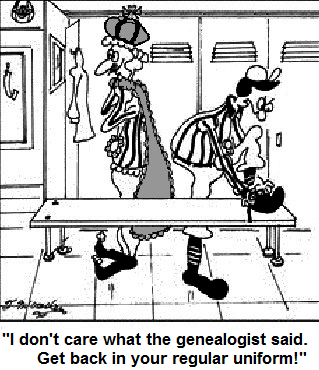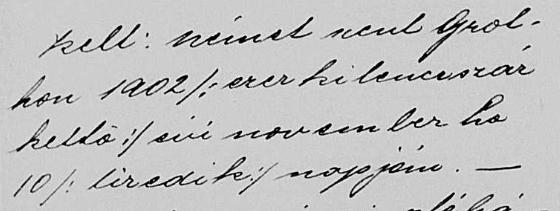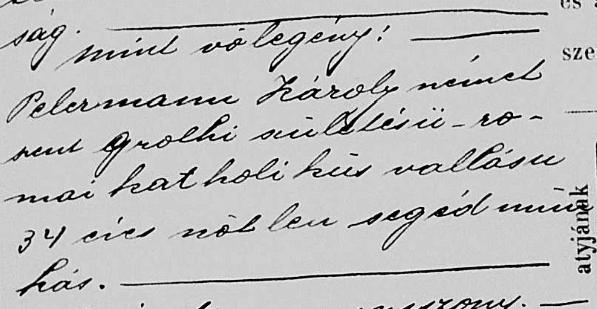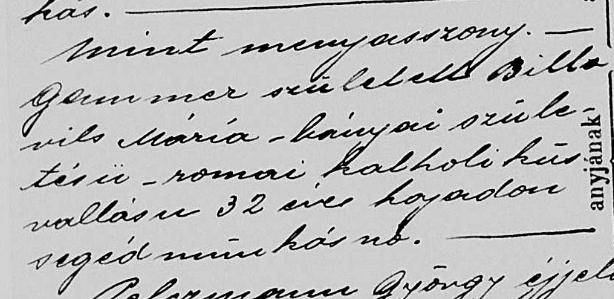|
The
|
||||||||||||||||||||||||||||||||||||||||||||||||||||||||||||||||||||||||||||||||||||||||||||||||||||||||||||||||||||||||||||||||||||||||||||||||||||||||||||||||||||||||||||||||||||||||||||||||||||||||||||||||||||||||||||||
THE BURGENLAND BUNCH NEWS - No. 299 July 31, 2019, © 2019 by The Burgenland Bunch All rights reserved. Permission to copy excerpts granted if credit is provided. Editor: Thomas Steichen (email: tj.steichen@comcast.net) BB Home Page: the-burgenland-bunch.org BB Newsletter Archives: BB Newsletter BB Facebook Page: TheBurgenlandBunchOFFICIAL Our 23rd year. The Burgenland Bunch Newsletter is issued monthly online. The BB was founded in 1997 by Gerald Berghold, who died in August 2008. |
||||||||||||||||||||||||||||||||||||||||||||||||||||||||||||||||||||||||||||||||||||||||||||||||||||||||||||||||||||||||||||||||||||||||||||||||||||||||||||||||||||||||||||||||||||||||||||||||||||||||||||||||||||||||||||||
| Current Status Of The BB: * Members: 2871 * Surname Entries: 8748 * Query Board Entries: 5771 * Staff Members: 13 |
||||||||||||||||||||||||||||||||||||||||||||||||||||||||||||||||||||||||||||||||||||||||||||||||||||||||||||||||||||||||||||||||||||||||||||||||||||||||||||||||||||||||||||||||||||||||||||||||||||||||||||||||||||||||||||||
|
||||||||||||||||||||||||||||||||||||||||||||||||||||||||||||||||||||||||||||||||||||||||||||||||||||||||||||||||||||||||||||||||||||||||||||||||||||||||||||||||||||||||||||||||||||||||||||||||||||||||||||||||||||||||||||||
1) THE PRESIDENT'S CORNER (by Tom Steichen)  This
month's collection of bits and pieces in Article 1, starts off with the long-awaited
announcement of the release by the Eisenstadt diocese of the online Burgenland Catholic records... coming to a
computer near you this autumn! We follow that at with the announcement of the current availability of most of the
Steingraben church and civil records spanning 1828 to 1920. We then share a little feedback from newsletter
readers before jumping into a long tidbit (if such is possible) concerning the new editing feature that
FamilySearch has added for indexed records. We finish with another correction to civil recording
districts (it seems we are discovering minor corrections on a regular basis lately!) before closing out with our regular
tidbit features, the monthly BB Facebook report, book sales, a recipe and a cartoon. This
month's collection of bits and pieces in Article 1, starts off with the long-awaited
announcement of the release by the Eisenstadt diocese of the online Burgenland Catholic records... coming to a
computer near you this autumn! We follow that at with the announcement of the current availability of most of the
Steingraben church and civil records spanning 1828 to 1920. We then share a little feedback from newsletter
readers before jumping into a long tidbit (if such is possible) concerning the new editing feature that
FamilySearch has added for indexed records. We finish with another correction to civil recording
districts (it seems we are discovering minor corrections on a regular basis lately!) before closing out with our regular
tidbit features, the monthly BB Facebook report, book sales, a recipe and a cartoon.Article 2 is the first of two parts of a somewhat-long 1994 journal article that reported on a study done shortly after the fall of the Iron Curtain (in 1989). Originally, I intended to add comments... but then I decided I'd rather have you hear the original voices, without my words influencing your interpretation of what is said. The study examines the "Divergent Development" of Moschendorf, Austria, and Pinkamindszent, Hungary, Two Villages on Opposite Sides of the 1921 Austro-Hungarian Border ...yet within sight of each other. Part 1 of the article describes research methods, provides pre-1921 background, then describes differences that developed after the 1921 establishment of Burgenland and the new national border. Part 2 of the article (to be provided next month) speaks to "the decisive rupture," which came only after the end of WW-II with the establishment of the Iron Curtain and with the associated changes in the political environments. Despite being specifically about the two named villages, I'm sure the key points made by the authors in the article apply in various ways to all villages along this border, so the article should be of interest to all of us... read and ponder what it teaches. Article 3 is by Frank Paukowits, who established BH&R in 2002 and continued to lead its development after it became part of the BB in 2008. The current article speaks to some recent Fine-Tuning of the Module that we hope will enhance its usefulness. Article 4 is the first of three related articles, wherein I try to make accessible the "Marginal" Entries found in Civil Records, in this case in the Marriage records. Marginal entries are those hand-written in the margins of the pre-printed "long" Hungarian birth, marriage and death records, with the form X'd out and its fields left blank. In subsequent newsletters, I'll look at marginal entries in the birth and death records. The remaining articles are our standard sections: Historical Newsletter Articles (this month providing the origins of two BB features), and the Ethnic Events and Emigrant Obituaries sections.  Online
Burgenland Catholic Church Books: The Catholic Diocese of Eisenstadt, which covers all of Burgenland, announced in
July that digital images of its baptism, marriage and deaths book pages will be available online this Fall. Online
Burgenland Catholic Church Books: The Catholic Diocese of Eisenstadt, which covers all of Burgenland, announced in
July that digital images of its baptism, marriage and deaths book pages will be available online this Fall. While the announcement did not clearly state the time period to be covered, the expectation is that all publishable books will be available, meaning some records will go back as far as the early 1600s and forward as far as allowed by the Austrian privacy law (which blocks public access to birth and baptismal books for 100 years, to marriage books for 75 years, and to death books for 30 years). This should expand the period of researchable Catholic records greatly for most villages. The announcement also did not state whether there will be a charge to access the images. It is known that the digitization work was done in cooperation with the Hungarian diocese of Györ (Raab), which has a history of charging for access to their digital records. However, the announcement also mentioned the "Matricula Online" project, which provides free access to church books for much of Austria. Further, the books for the Burgenland villages of Kaisersteinbruch and Mönchhof are currently available at Matricula (here: http://data.matricula-online.eu/en/oesterreich/burgenland/). Whether these are a test of the system for the Diocese project or an unrelated effort is unknown, but it gives hope that access may be free via this platform. Regardless, we will need to wait for a further announcement to learn more. Addendum, 31 July: After publishing this newsletter, I received two email messages concerning the digitized presence of the books for the Burgenland villages of Kaisersteinbruch and Mönchhof on the Matricula site. They are, indeed, an unrelated effort, as those records were stored in the Cistercian Abbey at Heiligenkreuz im Wienerwald, Lower Austria (some 20 miles northwest of Eisenstadt). Presumably, they were a small part of the larger project to digitize and store on Matricula the Lower Austria records. One message also called into question whether all villages and/or all books will be available online, saying only the books in the Eisenstadt archives were digitized. That leaves out any books that reside only in a parish office. Again, we will need to wait until a clarifying announcement is made or until the online records become available and can be analyzed for completeness.  Vital
Records Transcription: We continue to add transcriptions... this month, BB Member Charles von Breitenbach
is responsible for instigating the addition of Steingraben records to our collection. Some of Charles'
ancestors had a long history in Steingraben, so he began a personal project to transcribe Catholic birth records for family
members there. Steingraben was in the Gerersdorf bei Güssing Catholic parish that also included itself,
Gerersdorf (Hungarian: Németszentgrót), and the villages of Rehgraben (Hungarian: Özgödör,
Croatian: Prašcevo) and Sulz (Hungarian: Sóskut; Croatian: Šeškut). However, his transcription
did not include records for these villages unless the record also involved a parent from Steingraben. With some help
from me, the project was expanded to include all Steingraben-related births, whether or not they included a known
relative of Charles. Later, I induced Charles into helping transcribe all Catholic death records for Steingraben and
I chose to transcribe the corresponding Catholic marriages. Vital
Records Transcription: We continue to add transcriptions... this month, BB Member Charles von Breitenbach
is responsible for instigating the addition of Steingraben records to our collection. Some of Charles'
ancestors had a long history in Steingraben, so he began a personal project to transcribe Catholic birth records for family
members there. Steingraben was in the Gerersdorf bei Güssing Catholic parish that also included itself,
Gerersdorf (Hungarian: Németszentgrót), and the villages of Rehgraben (Hungarian: Özgödör,
Croatian: Prašcevo) and Sulz (Hungarian: Sóskut; Croatian: Šeškut). However, his transcription
did not include records for these villages unless the record also involved a parent from Steingraben. With some help
from me, the project was expanded to include all Steingraben-related births, whether or not they included a known
relative of Charles. Later, I induced Charles into helping transcribe all Catholic death records for Steingraben and
I chose to transcribe the corresponding Catholic marriages.Thus, the transcription from the Gerersdorf Catholic parish books for the years 1828 to 1895 is a complete transcription of all 747 birth records, 204 marriage records, and 559 death records that involve Steingraben. Further, a complete transcription of the 304 Steingraben birth records and 69 Steingraben marriage records found in the Gerersdorf civil recording district records for the years 1895 through 1920 has been completed. In these civil dataset, name spellings (both surname and given names) have been standardized to allow easier searches. A similar standardization was also applied to the Catholic death and marriage records. I'm sure the final set, the civil death records, will be forthcoming. Steingraben was known by the Hungarian names Bányácska and Bánya and the Croatian name Bojane. The name Bányácska is used for all entries in this collection (regardless of the variation entered in the original record). The Steingraben transcriptions have been implemented in sortable table format, found (directly) here: ChurchRecords/Steingraben/SteingrabenRecords.htm. Alternatively, you can start on the BB homepage and scroll down to the “Vital Records Transcriptions” section, then follow the appropriate links. Many thanks to Charles for instigating these transcriptions; they are appreciated! PS: If anyone wants to take on the challenge of adding records for any or all of the remaining villages in the Geresdorf parish and/or recording district, I'd be pleased to assist you in doing so!  Feedback
from Newsletter Readers: Almost every month I receive comments on the newsletter, so I thought I'd share a couple
that could be of use or interest to you... Feedback
from Newsletter Readers: Almost every month I receive comments on the newsletter, so I thought I'd share a couple
that could be of use or interest to you...Michael Stangl wrote: Tom, I was so thrilled to open up the April newsletter and see an article on Magyar-Buks! Magyar Buks is close to my heart since my GG Grandmother, Sabina Reisinger, was born there, and many of her immediate family lived there as well, in house #7. She married my GG Grandfather, Karoly Stangl, who was from the nearby town of Hagensdorf. I have a fair amount of information on these two towns, as my relatives lived there for 100 years. If any of your readers are in need of information, please ask them to contact me at mmstangl@gmail.com. Thanks so much for all your work with the BB. If there is any way you think I could help out, please let me know. Donna Kipila wrote: Some time ago there was a picture of the [Lehigh County Soldiers and Sailors] monument [in Allentown] and an inquiry about it. Found this [online article] and thought that it may be helpful: www.wfmz.com/features/historys-headlines/soldiers-and-sailors-monument. [Ed: The article is from 2011 and provides the history of the monument. As it is copyrighted, I provide a link only. Donna is referring to the Nov 2018 newsletter, Newsletter292.htm, where the monument is mentioned in a tidbit about celebrations after WW-I.] FamilySearch Indexed Records Now Editable: FamilySearch recently added a new feature: the ability to edit incorrect entries in indexed records. Announced July 12th (see https://www.familysearch.org/blog/en/edit-names-indexed-records/), the feature allows you to help future researchers by providing corrected information, be it data that was indexed incorrectly or that was wrong on the original record. Note that this feature applies only to indexed records... items like census entries are not editable (at least currently). As an example, I'll edit the indexed birth record for my great-grandmother, Theresia Halbauer of Wallern, Burgenland (then Valla, Moson, Hungary)... the actual edit is to her mother's surname, entered as Trundtner when Traudtner is on the record and Trautner is really the correct surname (or at least the one that was carried forward in time). Here is a (partial) image of what comes up when I select Theresia's indexed birth record: 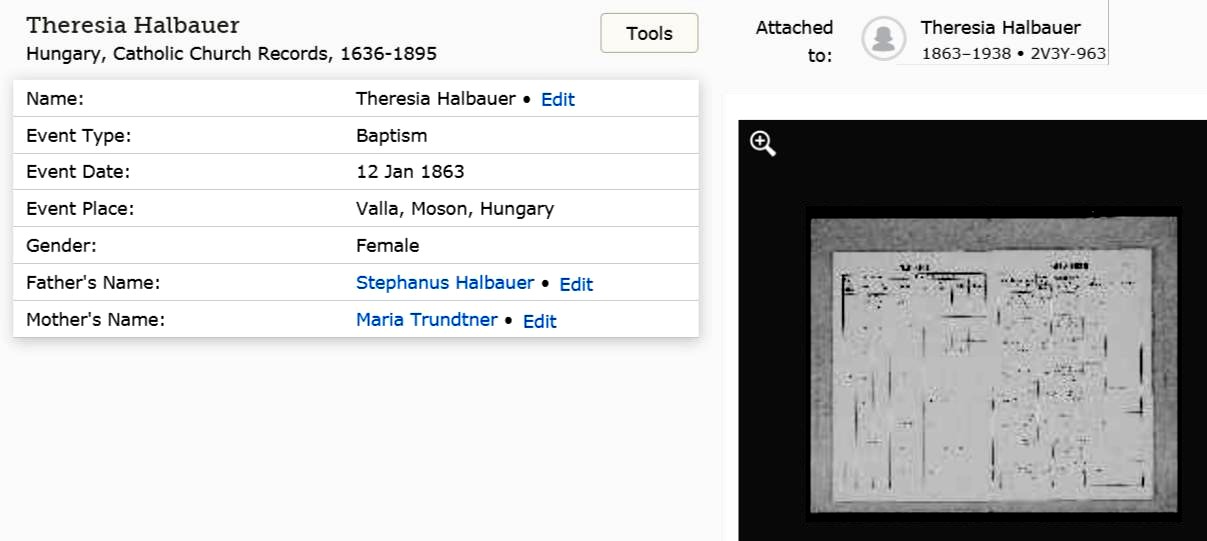 You should see above that the word "Edit" appears in blue by three names... each of these names can be edited on this record. When I click the "Edit" beside "Maria Trundtner", I get the following (though I have already zoomed in on Maria's name in the record): 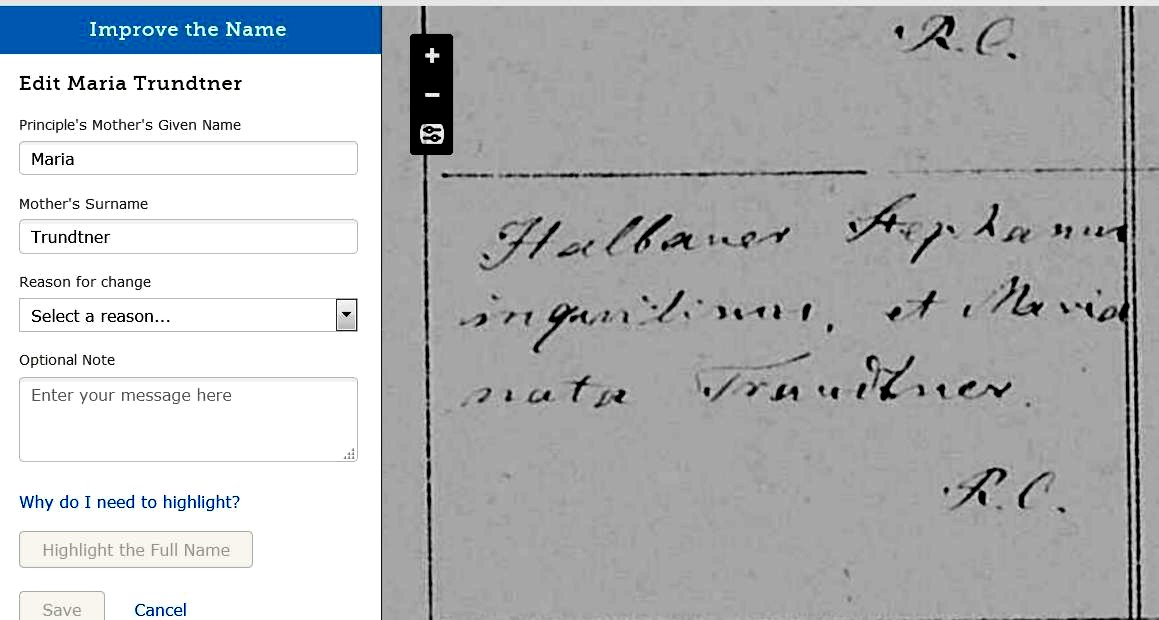 At this point, I would click in the "Mother's Surname" box and provide the correct spelling. Then I would provide a "Reason for change" ...the two choices you have are "Indexed Incorrectly" and "Wrong in the Document." In this case, I'll choose Indexed Incorrectly, though both choices are appropriate (so I'll add an Optional Note to explain that). Once you edit the name, the "Highlight the Full Name" button lights up (turns from gray to blue) and you are
directed to draw a box around the incorrect text.
What we should have had was: Güssing (before 1907); Gerersdorf bei Güssing (1907-1908); Güssing (after 1908). |
||||||||||||||||||||||||||||||||||||||||||||||||||||||||||||||||||||||||||||||||||||||||||||||||||||||||||||||||||||||||||||||||||||||||||||||||||||||||||||||||||||||||||||||||||||||||||||||||||||||||||||||||||||||||||||||
2) THE DIVERGENT DEVELOPMENT OF TWO VILLAGES IN THE AUSTRO-HUNGARIAN BORDER REGION [Part 1] (by Monika Maria Varadi and Doris Wastl-Walter) Originally published: Estudios Fronterizos. Núm. 34, julio-diciembre de 1994, pp. 167-193 (publicly available on the web here: pdf file) Monika Maria Varadi is research scholar at the Department for Regional Research of the Hungarian Academy of Sciences in Budapest. She has studied sociology and her main interest is sociology of rural areas. Doris Wastl-Walter has studied geography in Vienna, Austria and is now Associate Professor in the Department of Geography at the University of Klagenfurt, where she is also vice-rector. Abstract: This article is the carefully-documented experience of two villages, once closely united, physically, historically, economically, and of their divergent development after their traumatic separation by the Iron Curtain. The villages of Moschendorf [Austria] and Pinkamindszent [Hungary] lie within sight of each other in what was once the heart of the Austro-Hungarian Empire. The division of the region by an international border has caused irreversible changes, strongly related to the ideological and governmental systems under which each has lived. THE AIM OF THE INVESTIGATION The Research Subject and the Methods The fall of the Iron Curtain opened the way for comparative research work concerning the differences in regional development in the East and in the West, in this concrete case along the Austro-Hungarian border. Eastern Austria (Burgenland) had been part of the Hungarian half of the Austro-Hungarian Empire, and had, to a large extent, the same socioeconomic structure as the Hungarian neighborhood. In 1921, the area was divided by an international border; therefore East Austria and Western Hungary have had a divergent development. Life in this border region is determined by two restrictions: a) the location in a peripheral area in each of the two national settlement systems; b) the location at the Iron Curtain, a geopolitical rupture, which determines to a different extent the regional development on both its sides (see Figure 1).  Figure 1. Central Europe, 1995 This case study, a comparison of two border villages, formerly in many ways connected, but which had to relinquish any contact since 1948, reveals the consequences preceding from this location. The effects of these two geographical restrictions can be shown not only in the social and economic development of the two local societies, but also in the individual possibilities for self-realization. The Iron Curtain has not only been a border, it is a multiple rupture: state border, language border, ideological border, border between different social systems, and a military blockade between differently-developed countries. For our concrete work we have chosen the two villages Pinkamindszent (Allerheiligen) and Moschendorf (Nagysároslak), situated directly on the border at a distance of 2 kilometers from each other. The two villages were connected until 1948 by contacts of different types and intensities; they had in 1900 nearly the same number of inhabitants, and a similar demographic and socioeconomic structure. There is also visual contact between these two villages: you can see from one village to the other over the Iron Curtain. Present plans call for a check point to be installed there, but it probably will not be open to international traffic but only to the Austro-Hungarian local traffic. Both sides relate to this with differing expectations. The database of our work is, on the one hand, the statistical information of the census data; on the other hand, we used explorative methods for a detailed investigation. The research period is in general the twentieth century. Sometimes we got information from the last century, and we tried to verify this information by interviewing parents and grandparents. For the present-day situation, we did standardized interviews in May, 1990. In Moschendorf, it was possible to interview 69 households; in Pinkamindszent there were 32, to complete our study. We had several explorative interviews with elderly people. We also made maps of the functional and architectural structure of the villages, took photos, and checked the files. The events of our century have greatly affected the people of these two villages. The reports include very personal statements. But this oral history also gives us an idea of the collective memory (see Halbwachs) which still influences today the daily life and the social relationships. We structured this contribution to follow epochs marked by important events. The most important of them was the establishment of a border in the formerly united country. This border only became important in determining possibilities in the lives of individuals, families and communities, when it also became the border between two political systems.  Figure 2. The Location of the Two Investigated Villages, Moschendorf and Pinkamindszent The Two Villages Moschendorf (Nagysároslak) and Pinkamindszent (Allerheiligen) Up to 1921, Pinkamindszent was not only the community center of the surrounding Hungarian villages, but also of the villages of the German-speaking minority, like Moschendorf. Pinkamindszent, with 194 inhabitants today, is situated in the Komitat Vas, about 10 km from Körmend; from 1969 to 1990 it was part of the community of Vasalja (358 inhabitants). Today it is politically independent, but without financial resources or economic power. Moschendorf (468 inhabitants), has been part of the community of Strem (605 inhabitants) since 1973. Until 1973, Moschendorf was an independent community, but there are no present plans to try for independence again. Concerning the traffic situation, Pinkamindszent had an advantage, compared to Moschendorf, because it lies on the road from Körmend to Güssing. It had a railway-station, while Moschendorf was out of the way, and had no railway connections. Since the fifties, both villages have had this remote location. Today you have to make a 50 km detour to get from one place to the other. Both villages have a similar natural potential for agriculture. The agrarian structure was also similar: a farmstead included pastures, grain fields, forest (in general, in collective ownership), and in Moschendorf, vineyards. The main industry was cattle breeding and dairying. Both villages also had the same problems: as the agriculture could not support the population under the given ownership and utilization conditions (just as in many other parts of central Europe), a large percent of the population emigrated. In 1900, both village also had similarities in the number of inhabitants and the demographic structure. They were homogenous as concerning the religion, both were Roman Catholic with their own parish. As to language: the people of Pinkamindszent spoke Hungarian; those of Moschendorf, German.  Figure 3. The Decline of Population in the Two Investigated Villages In Pinkamindszent the number of inhabitants showed a continuous decline until 1949 because of emigration, but from this moment on, the decrease in population was very dramatic as a consequence of the radical political and economic changes. Considering the decreasing number of young people and the increasing proportion of old people (at present, about half of the population) this process seems irreversible. During this century, the number of inhabitants went down to a quarter of the population at the turn of the century, and a change in the trend cannot be foreseen. Also, in Moschendorf a continuous decline in population can be seen, but the trend has not increased since the fifties, and over the last few years it almost stopped, Thus, the demographic structure is different too: the percentage of young people (less than twenty years old) is 23.5%, that of elderly people (over 60 years old) is 31%. This means that the total population only decreased to half the number of the population at the turn of the century, and the trend was interrupted some years ago. Table 1. Population Development and Age Structure of the Two Investigated Villages (1900-1991). Column Details: 1 = Year. 2 = Number of houses 1900-1941, apartments 1949-1991. 3 = Number of inhabitants (1900-1941 present population, 1949-1991 resident population). 4, 5 = Number and share of population of 0 to 19 years old. 6, 7 = Number and share of population of 20 to 60/64 years old. 8, 9 = Number and share of population more than 60/64 years old. Source: census data Pinkamindszent (Allerheiligen)
In spite of all strategies, in these families especially, agriculture could not supply the needs of the continuously
growing population. Since the seventies of the last century emigration already seemed the only suitable solution for young
people of this western Hungarian region. Between 1890 and 1914, about 33,000 persons left this region, usually to go to the
industrial regions of North America: to Chicago, Pennsylvania and New York. From 1918 to 1938, about 25,000 persons from
Burgenland (the new name for the then Austrian part of western Hungary) went overseas to many countries, including Canada,
Argentina, Brazil and Bolivia. The peak emigration year was 1923, with 6,683 emigrants (see Dujmovits, 1975). During the
Hungarian era of the monarchy, the number of emigrants to America is estimated for the time from 1867 to 1918, at about 2
million, among them 1.5 million to the United States. 75% of these emigrants were farmers, half of them day laborers. Only
33% were Hungarians, which means there was a high percentage from the minorities, especially from the non-industrialized
periphery (see Romsics, 1985). |
||||||||||||||||||||||||||||||||||||||||||||||||||||||||||||||||||||||||||||||||||||||||||||||||||||||||||||||||||||||||||||||||||||||||||||||||||||||||||||||||||||||||||||||||||||||||||||||||||||||||||||||||||||||||||||||
3) FINE-TUNING THE BH&R MODULE (by Frank Paukowits)  The BH&R
module has been included in the Burgenland Bunch website for more than ten years. It is a key resource for researching
family ancestry where emigration from Burgenland has occurred as part of the Auswanderung from the late 1880’s
onward. The BH&R
module has been included in the Burgenland Bunch website for more than ten years. It is a key resource for researching
family ancestry where emigration from Burgenland has occurred as part of the Auswanderung from the late 1880’s
onward. The two main sections of the module are the Remembrance pages and the Recently Deceased pages. The Remembrance pages contain the names of deceased Burgenländers, maiden names of females (when available), their hometowns, birth and death years, and locations of the cemeteries where they are buried. With such information at their disposal, BB members can often fill in critical parts of their family research through the use of this tool. There are more than 24,000 entries in this file and about 1,000 new names are being added each year. At this rate, there should be 25,000 names in this file sometime in 2020, which is a major accomplishment and a number we thought we never would reach. The time-consuming effort of adding new names has largely fallen on staff member Bob Strauch. Bob has identified numerous databases having information on deceased Burgenländers and identified obituaries in newspapers. These sources have enabled him to add relevant information to the ever-expanding BH&R database. It’s been a crowning achievement and, as mentioned, BB members should take a look to see if they can get useful information as part of their research activities. These pages, divided into states and regions, can be accessed from the left edge of the BH&R home page: BH&R/home.htm. Also, the Recently Deceased pages in the BH&R module contain the full obituaries of over 400 emigrant Burgenländers who died during the last 12 years. Originally, the obituaries were organized chronologically, but to facilitate their value, Tom Steichen, president of the BB, recently added a new alphabetic index for the obituaries. This should help members find obituaries that may have value to them. The Recently Deceased pages and its new alphabetic index can be accessed via the Recent-Deceased link in the lower left corner of the BH&R page or directly here: BH&R/homelinks/recent-deceased.htm. Lastly, there is a search box at the bottom of the BH&R home page that will let you search for a selected name (image below); it will return the BH&R pages where that name appears.  Special thanks to Bob and Tom for the work they continue to do to enhance the BH&R module. |
||||||||||||||||||||||||||||||||||||||||||||||||||||||||||||||||||||||||||||||||||||||||||||||||||||||||||||||||||||||||||||||||||||||||||||||||||||||||||||||||||||||||||||||||||||||||||||||||||||||||||||||||||||||||||||||
4) "MARGINAL" ENTRIES IN CIVIL MARRIAGE RECORDS 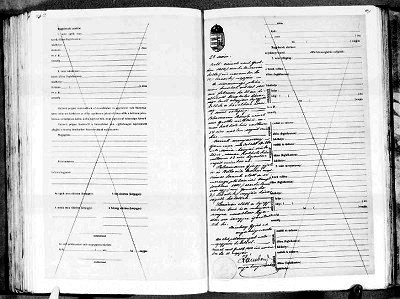 How often have you read through
the early Hungarian civil vital-events records (i.e., the "long forms" of 1895 to 1906) and noted something like the page to
the right? How often have you read through
the early Hungarian civil vital-events records (i.e., the "long forms" of 1895 to 1906) and noted something like the page to
the right?Yes, a big X over the pre-printed sections and a lot of handwritten Hungarian text in a marginal area. If you are like most people, you skipped past these pages, as it simply looked too difficult to pick anything useful from all that writing. Well, you probably did yourself a disservice in skipping past those pages, as they are, indeed, records of real vital-events entries, some of which may apply to your ancestors... specifically those that apparently "disappeared" from the records, leaving you to wonder what happened to them. These "marginal" entries are records of events that occurred elsewhere but are being added to the local records because the family involved has legal standing in the town. [In the US, this type of vital record is called a return or delayed marriage certificate, and we have similar such returns for births and deaths.] [There are other types of text written in the margin: notes written "after the fact" which add to or correct the information within the form on that page. But the form, itself, is filled out and there is not a big X over the form. It is especially common in birth records to find a small note that points to the child's corresponding death record. Regardless of type, these notes are often quite difficult to read since too much information is usually being crammed into too small a space.] The example I show above is from the Németszentgrót (Gerersdorf bei Güssing) civil recording district marriage records, and it proved crucial in helping a BB member get past a genealogical "road block." Let me take a moment to explain... Our member was struggling with what happened to a relative named Maria Billovits. He knew she had married a Johann Gammer in her hometown and had a daughter, Agnes, there... but then they all disappeared from the records. However, he found a manifest where a correct-age "Agnes Gammer," from a nearby village, had traveled to America as a minor in the company of older relatives... but the names of those relatives were unfamiliar. Discovering the above-mentioned marginal marriage entry set off a cascade of new discoveries: ● Maria's new married surname matched the surnames of those relatives on Agnes' manifest, showing that one was actually Agnes' mother Maria, thus allowing our member to trace Agnes' future marriage and children as well as continue Maria’s story. ● That Maria’s brother, Adam (one of the witnesses on the marriage record), was also living in Vienna at the time of her second marriage, which was a surprise. ● Our member knew that Adam had gone to Pennsylvania... the added information was that he traveled with his new brother-in-law, Carl Pelzmann. Without the benefit of this record, Carl would simply have been another name on the manifest. ● The need to look for a death record for Johann Gammer, so he can be laid to rest. But let's get back to the main topic of this article... Marriage records (compared to birth or death records) are likely the easiest to extract critical information from, as they tend to have a fairly consistent format (especially within a recording district). However, they are free-form entries, so can and do vary. Nonetheless, there are words you can key on to find the relevant names, dates and places, and there are techniques useful in deciding quickly whether you need to examine the record more closely. Below is a blow-up of the actual handwritten entry from above (the original image is here: https://www.familysearch.org/ark:/61903/3:1:33SQ-GTHH-DWD?i=192&cc=1452460&cat=85694), should you wish to explore further).  Looks intimidating, doesn't it? So how can we attack these records and efficiently extract the useful information? Let's talk about searching first... typically you will be looking for either a bride or groom's name. Almost without exception, those names follow these keywords: Mint vőlegény (= as groom) Mint menyasszony (= as bride) If you look at the image above (also see the extracts below), you'll see these words are also set off by lines and/or by paragraph breaks (though this is not always true):  Here (see above), the groom's name is Pelczmann Károly (given in the surname-first Hungarian fashion).  The bride's name (above), in this case, is a little harder to suss out, as she was married previously, so her name is given as Gammer született Billovits Mária (Maria Gammer born Billovits). Had she not been previously married, it would have been just Billovits Mária. Regardless, her (current) surname immediately follows the key phrase. For both bride and groom, their given names will be shown in their Hungarian forms, so if you don't already know what the Hungarians would have called your ancestor, you should look it up before beginning a search (there are websites that provide name equivalences... my favorite being https://www.behindthename.com). I'll also warn you that some registrar's writing (these are civil records, so registrar, not priest) is not as legible as in this example... but you should still be able to find the key words. Also, some bury these words deep in a paragraph, so you'll have to search harder for them, but a lot of registrars wrote in paragraph format with these keywords heading a couple of those paragraphs.. The efficient technique to find a desired record is to look specifically for those key "Mint ..." phrases, rather than directly for a name of interest, because the keywords will have a consistent appearance and thus be easy to spot, whereas the names will change from record to record, making you lose focus. Once you find the keyword, check the surname that immediately follows and move on if the surname does not match what you are looking for. With a little practice, you should be able to decide whether the record is worth examining further almost as quickly as it takes for the whole image to paint onto your screen. You'll also learn quickly that the key phrases appear in the same approximate position in the entries, so your eye does not have to search far to find them as you page through the images. But what about after you find a name of interest? How to find the key data in the entry? I need to talk about the "standard" elements of these entries. To do that, I'll show the transcription and translation in the table below of my example entry. I have also numbered, in the leftmost column, the parts of the entry so I can point you to the right section during my discussion.
# 1) 22 szám. |
||||||||||||||||||||||||||||||||||||||||||||||||||||||||||||||||||||||||||||||||||||||||||||||||||||||||||||||||||||||||||||||||||||||||||||||||||||||||||||||||||||||||||||||||||||||||||||||||||||||||||||||||||||||||||||||
5) HISTORICAL BB NEWSLETTER ARTICLES Editor: This is part of our series designed to recycle interesting articles from the BB Newsletters of 10 years ago. However, again I find myself going back 20 years, to July 1999, to pull an article about words found in old records. Two of these were new to me! THE BURGENLAND BUNCH NEWS - No. 61 July 31, 1999 OCCUPATIONS OR TITLES? MDLikar writes: I haven't been able to translate the following words. I think that they are occupations or professions. Can you help me or direct me to someone who can? Hübler, Hüblerstochter, Häusler, Kaischler, Lakierer-Gerverbe. Albert Schuch responds: Only the last one is a profession. The correct spelling is "Lackierer-Gewerbe", and a "Lackierer" is a lacquerer (or varnisher). "Lackierer-Gewerbe" means "lacquerer's business". Of the other words, "Hüblerstochter" is a "Hübler's" daughter, so there are only three left to explain, all of these describe a certain socioeconomic status. "Kaischler" is usually spelled "Keuschler", and this is a person living in a "Keusche", which is a small house, or rather just a small hut. In most cases the "Keuschler" will not own any land etc., he just has his hut and maybe some small animals. A "Häusler" (or "Kleinhäusler") is a person who only owns a house ("Haus"), also nothing extra (no arable land, no meadows, forests etc., at least not in a quantity large enough to call him a farmer). Not much difference between "Keuschler" and "Häusler", can be the same, but in most cases the Häusler's house will have been a bit larger. So we have the "Hübler" left. This name is derived from the word "Hube" or "Hufe", which means a certain amount of arable land; an old dictionary offers translations like hide or yard (of land) or yard-land; the "Hübler" is the owner of a "Hube", and it is difficult to translate into English, but I think "farmer" will not be wrong. Maybe "landowner" too, but I'd prefer farmer. |
||||||||||||||||||||||||||||||||||||||||||||||||||||||||||||||||||||||||||||||||||||||||||||||||||||||||||||||||||||||||||||||||||||||||||||||||||||||||||||||||||||||||||||||||||||||||||||||||||||||||||||||||||||||||||||||
6) ETHNIC EVENTS LEHIGH VALLEY, PA Sunday, August 4: Parish Picnic at St. Peter's Roman Catholic Church in Coplay. Polka Mass at 10:30 AM. Entertainment by the Emil Schanta Band. Info: www.stpeterchurchcoplay.com Sunday, August 11: Sunday Dance at the Coplay Sängerbund. Music by Maria & John. Info: www.coplaysaengerbund.com Sunday, August 18: German-American Day at the Evergreen Heimatbund in Fleetwood. Entertainment by Maria & John, local Schuhplattler groups and German choruses. Info: www.facebook.com/evergreengermanclub Sunday, August 18: Sunday Dance at the Coplay Sängerbund. Music by the Emil Schanta Band. Info: www.coplaysaengerbund.com Friday - Sunday, August 23 - 25: Coplay Community Days at Coplay Community Park. Music by the Josef Kroboth Orchestra (Sunday 12-3 PM). Info: www.facebook.com/CoplayCommunityDaysFestival Saturday, August 24: 40th Stiftungsfest of the Auerhahn Schuhplattler Verein at the Evergreen Heimatbund in Fleetwood. Entertainment by the Josef Kroboth Orchestra and visiting dance groups. Info: www.facebook.com/evergreengermanclub NEW BRITAIN, CT Friday, Aug 2, 7 pm: Heimat Abend. Austrian Donau Club, 545 Arch Street, $3. Music by Frank Billowitz. Friday, Aug 16, 7:30 pm: Heurigan Abend. Austrian Donau Club, 545 Arch Street, $3. Music by Schachtelgebirger Musikanten. UPPER MIDWEST Sunday, August 18, 12:30 pm: Upper Midwest Burgenland Bunch "pot luck" meeting, Ramsey County Library, 4570 Victoria St. N, Shoreview, MN. |
||||||||||||||||||||||||||||||||||||||||||||||||||||||||||||||||||||||||||||||||||||||||||||||||||||||||||||||||||||||||||||||||||||||||||||||||||||||||||||||||||||||||||||||||||||||||||||||||||||||||||||||||||||||||||||||
7) BURGENLAND EMIGRANT OBITUARIES Martin Schneider  Martin Schneider, 91, of Allentown, Pennsylvania, died on Saturday, June 29, 2019 at Luther Crest Health Care Center. His wife, Elisabeth M. (Ostertag) Schneider, died on October 14, 2010. Born in Kópháza (Koljnof/Kohlnhof), Hungary, he was the son of the late Frank and Katherine (Klemons) Schneider. Martin was the owner of Ostertag Orthopedic Aids in Spring Valley, NY. He was of the Catholic Faith. Survivors: Daughters, Catherine Trawinski and Christine Schneider; Son, Andrew Schneider; Brothers, Matt and Karl Schneider; and 5 Grandchildren. Services: Mass of Christian Burial, 10 a.m. Saturday, July 6, 2019 at Cathedral Church of St. Catharine of Siena, 1825 W. Turner St., Allentown, PA. A viewing will be held from 6 to 8 p.m. Friday at Bachman, Kulik & Reinsmith Funeral Home, 17th & Hamilton Streets, Allentown. Interment in St. Anthony's Cemetery in Nanuet, NY will be private. Contributions: In lieu of flowers, memorial donations may be made to Luther Crest Benevolent Fund, 800 Hausman Road, Allentown, PA 18104. Published in Morning Call on July 1, 2019 Rose Fischer (née Stranzl)  Rose Fischer, 70, of Nazareth, Pennsylvania passed away peacefully at home on Wednesday, July 17, 2019, with her loving family by her side. She was the wife of the late Harold Fischer, who passed away on January 5, 2005. Born on August 1, 1948, in Glasing, Austria, Rose was the daughter of the late Hermann and Cecelia (Marth) Stranzl. In her younger years, Rose was a hairdresser. Once her grandchildren were born, she proudly became their full-time Nanny. Rose's passion was gardening and it was evident in her home and yard. She loved to travel, mostly on cruises and she loved to bake. But her greatest joy was gathering the family for backyard barbecues and holidays. Rose was a member of Holy Family Catholic Church of Nazareth, Nazareth Area Garden Club, the Funsters and the Red Hat Society. Rose is deeply missed by children, daughter, Tricia Lollis and husband David, son, Harold Fischer and wife Heather, all of Nazareth; grandchildren, Corey and wife Claire, Justina and husband Nolan, Eric, Krista, Nicholas, Cassie, and Michael, great-grandson, Liam, son-in-law, Barry Kates, close family friend, Audreanna Fennel, and many nieces and nephews. She was predeceased by her daughter, Karen Kates, who passed away May 13, 2010, and brother, Herb Stranzl. A Mass of Christian Burial will be held on Monday, July 22, 2019 at 11 a.m. in Holy Family Church, 410 W. Center St., Nazareth, PA 18064. Burial will follow in Holy Family Cemetery of Nazareth. Calling hours will take place on Sunday from 6 to 8 p.m. and Monday from 9:30 to 10:30 a.m., both times in the Joseph F. Reichel Funeral Home Inc., 220 Washington Park, Nazareth. Donations may be made to The Center for Animal Health & Welfare, 1165 Island Park Rd., Easton, PA 18042 in care of the funeral home. Online condolences may be offered at www.jfreichelfuneralhome.com. Published in The Express Times on July 19, 2019 |
||||||||||||||||||||||||||||||||||||||||||||||||||||||||||||||||||||||||||||||||||||||||||||||||||||||||||||||||||||||||||||||||||||||||||||||||||||||||||||||||||||||||||||||||||||||||||||||||||||||||||||||||||||||||||||||
| END OF NEWSLETTER (Even good things must end!) |
||||||||||||||||||||||||||||||||||||||||||||||||||||||||||||||||||||||||||||||||||||||||||||||||||||||||||||||||||||||||||||||||||||||||||||||||||||||||||||||||||||||||||||||||||||||||||||||||||||||||||||||||||||||||||||||
|
Burgenland Bunch Newsletter, copyright © 2019 by The Burgenland Bunch |
||||||||||||||||||||||||||||||||||||||||||||||||||||||||||||||||||||||||||||||||||||||||||||||||||||||||||||||||||||||||||||||||||||||||||||||||||||||||||||||||||||||||||||||||||||||||||||||||||||||||||||||||||||||||||||||
 News
News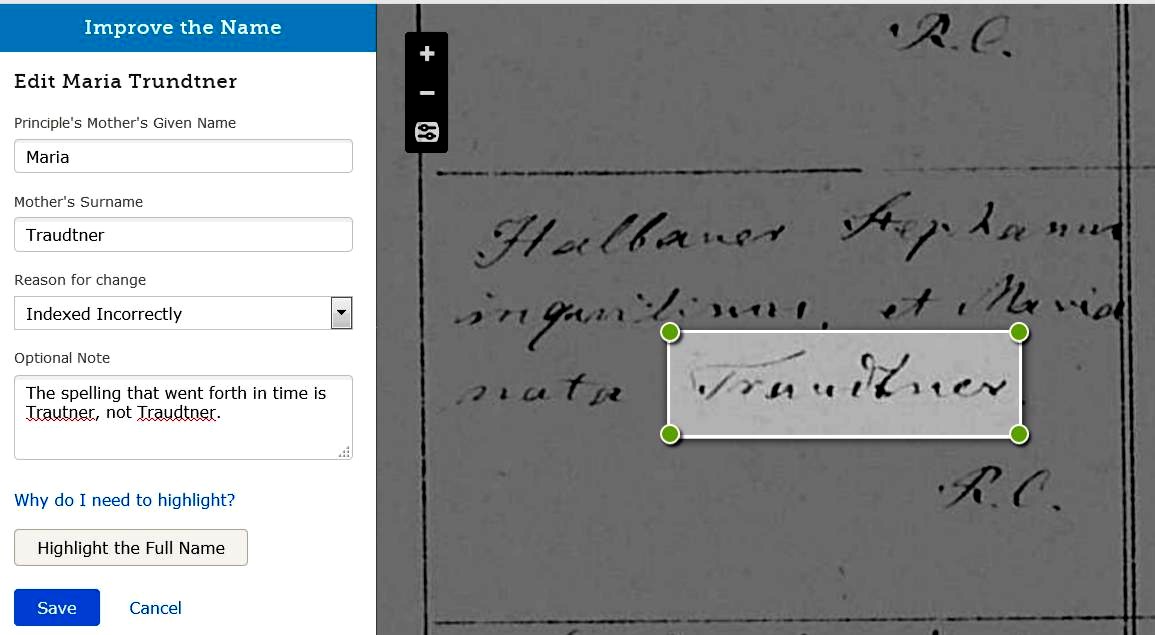
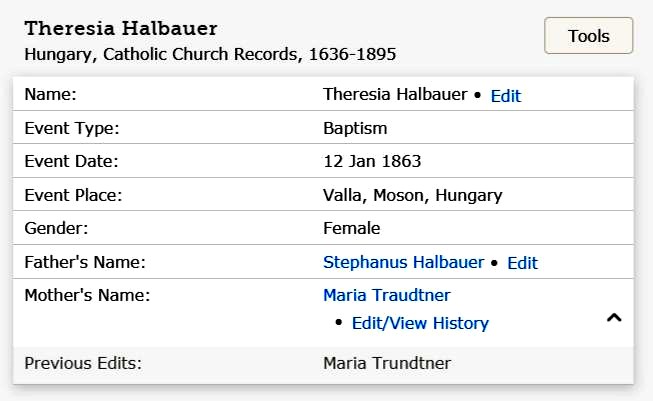
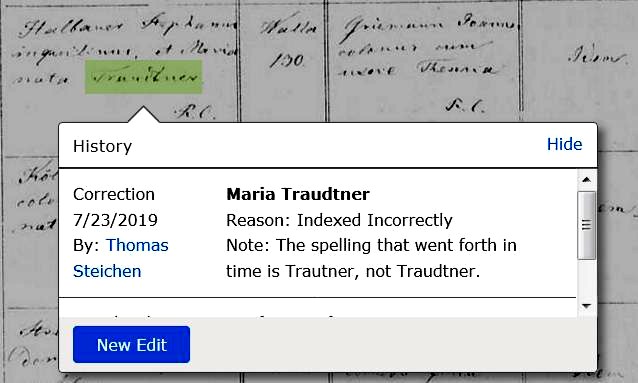
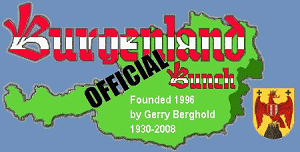 The
Facebook Bunch (from Vanessa Sandhu):
The
Facebook Bunch (from Vanessa Sandhu): 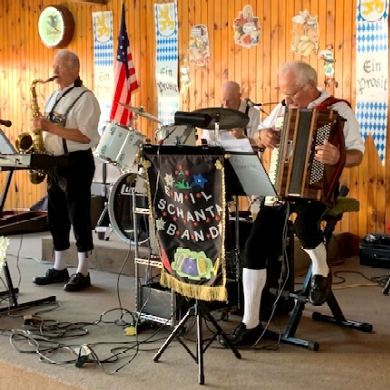
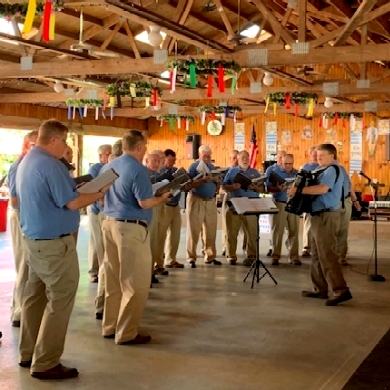
 Update
for book "The Burgenländer Emigration to America": Here is this month's update on purchases of the English issue of
the 3rd edition of Dr. Walter Dujmovits' book "Die Amerika-Wanderung Der Burgenländer."
Update
for book "The Burgenländer Emigration to America": Here is this month's update on purchases of the English issue of
the 3rd edition of Dr. Walter Dujmovits' book "Die Amerika-Wanderung Der Burgenländer." TOMATE
KRAUT - (Tomato Cabbage) (from St. Peter's Church)
TOMATE
KRAUT - (Tomato Cabbage) (from St. Peter's Church)
